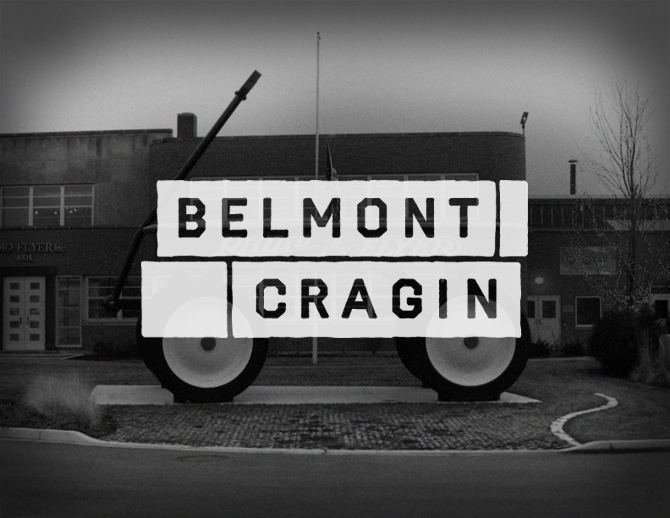Country United States Time zone CST (UTC-6) Asian population 1.6% Black population 3.5% | State Illinois Area 10.2 km² Hispanic population 78.9% Population 78,743 (2010) | |
 | ||
Neighborhoods ListBelmont CentralCraginHanson ParkKelvyn ParkHermosaGalewoodMontclare Hotels Hotel El Más Sercade Aesta Dirección, value palace, Deano's Drive Inn Restaurants Jess Cafe, Chefwear - Inc, Sol de Mexico, Taqueria Diversey, Central Gyros | ||
Vintage classic apartment for rent den and pantry belmont cragin chicago il 60639
Belmont Cragin is one of 77 officially designated Chicago community areas located on the Northwest Side of the City of Chicago, Illinois. It is designated Community Area 19, and is located 8 miles (13 km) NW of the Loop.
Contents
- Vintage classic apartment for rent den and pantry belmont cragin chicago il 60639
- Map of Belmont Cragin Chicago IL USA
- Beginnings
- Industrialization and Development
- 1940s Through the Present Day
- Demographics
- Education
- References
Map of Belmont Cragin, Chicago, IL, USA
Beginnings
The first business to open in Belmont Cragin was a saloon opened by George Merrill sometime after 1835, when he settled with his family at the intersection of Armitage and Grand Avenues. Operating the saloon out of his home, Merrill catered to truck farmers carrying produce over the plank road to the city. The corner, named Whiskey Point, prompted many colorful and romanticized legends but attracted few permanent residents.
In 1862, Michael Moran established a hotel at Whiskey Point, but the area remained rural until 20 years later, when Cragin Brothers & Company moved their tin plate and sheet iron processing plant near Whiskey Point. The plant and warehouses covered 11 acres (45,000 m2), and the Chicago, Milwaukee & St. Paul Railroad built a station at Leclaire Avenue to accommodate all the employees. Cragin also purchased a rivet company and moved machinery and workers from Connecticut to the location. Job opportunities and rail service brought settlers and a housing boom to the town, now named Cragin. Within two years, Cragin's population was 200, and the community boasted a general store, two schoolhouses, and a Congregational church.
Industrialization and Development
Railroads drew more factories and workers to the area, which was annexed into Chicago as part of Jefferson Township in 1889. The Belt Railway Company extended its service into the area in 1883, and plants developed in the new neighborhoods of Hanson Park and Galewood. In the same year, the Washburn and Moen Manufacturing Company launched a branch for its wire products, and the Western Brick and Tile Company found Galewood's superior clay soil conducive to business. By 1891, Westinghouse, Church, Kerr & Company Iron Works, the Pitts Agricultural Works Warehouse, and the Rice and Bullen Malting Company brought more people into Cragin.
In 1922 W. F. Hall Printing Company erected a plant on 17 acres (69,000 m2) adjacent to the Northwestern railroad line, which further spurred manufacturing development. Swedish, German, and Irish workers were among the earliest to move near these factories. By 1920, these jobs drew Poles and Italians as well, and the population of the area more than quadrupled in the next decade. By 1930 the population escalated to 60,221, one-third foreign-born. In the 1930s, the community area became known as Belmont Cragin. Builders inundated the area to fill the housing needs of area workers. Bungalows, Cape Cods, and two-flats offered a range of housing type choices. Especially popular was the subdivided residential neighborhood on the eastern border named Belmont Park.
1940s Through the Present Day
Shopping districts added to the commercial atmosphere. In the 1940s Belmont-Central was constructed with a dozen stores, a parking lot, and a children's playground. During the postwar years, the Chicago Transit Authority extended its Belmont Street bus service beyond Central, transporting new patrons into the district. A 1981 addition of a nearby parking garage continued to contribute to business prosperity. In March 1976, the opening of the Brickyard Shopping Mall on the former site of the Carey Brickyard property at Narragansett and Diversey added new vitality to the community, drawing city shoppers away from suburban malls.
Until the early 1980s, Central Soya and its silos were located south of Grand Ave on Laramie; Glidden paint was located just south of the train station on the 1800 block of North LeClaire Ave until the early 1980s. Cragin Department Store, located on the 4900 block of West Armitage, was a family owned clothing and shoe store until the 1980s. Hawthorn Melody Dairy was located at Grand and Laramie. Reda's Liquors and Lizzi's House of Pizza were also located in the area.
Belmont Cragin's overall population grew by more than 6 percent in the 1980s and 37 percent in the 1990s. The Hispanic population grew from 3,072 in 1980 to 16,846 in 1990. By the 2000 census the area was 65 percent Hispanic, joining the Polish immigrants and businesses who had come to the area earlier. A number of young middle-class professionals joined blue-collar laborers in the area. Residents formed an active coalition called the Northwest Neighborhood Federation to address increases in crime, gangs, and school overpopulation.
By 1995, Hall Printing and other plants had closed their doors. The area experienced a drop in manufacturing employment and a decline in retail activity during the 1980s. Concerns over unemployment and an increasing poverty level have led residents to organize a home reinvestment campaign and to study ways of reviving the commercial climate in the area.
Demographics
As of 2016 the neighborhood has some young professionals, some working class Latino people, and some older Polish people.
Education
Chicago Public Schools operates district public schools.
Elementary and middle schools serving Belmont Cragin include Barry, Falconer, Locke, Lyon, Schubert, Burbank, Prieto, Hanson Park, Lloyd, and Northwest Middle.
Steinmetz High School and Foreman High School serve sections of Belmont Cragin.
The Chicago Public Library Portage-Cragin Branch serves Belmont Cragin. It first opened in a storefront in 1927, with a permanent library opening on November 1, 1969.
